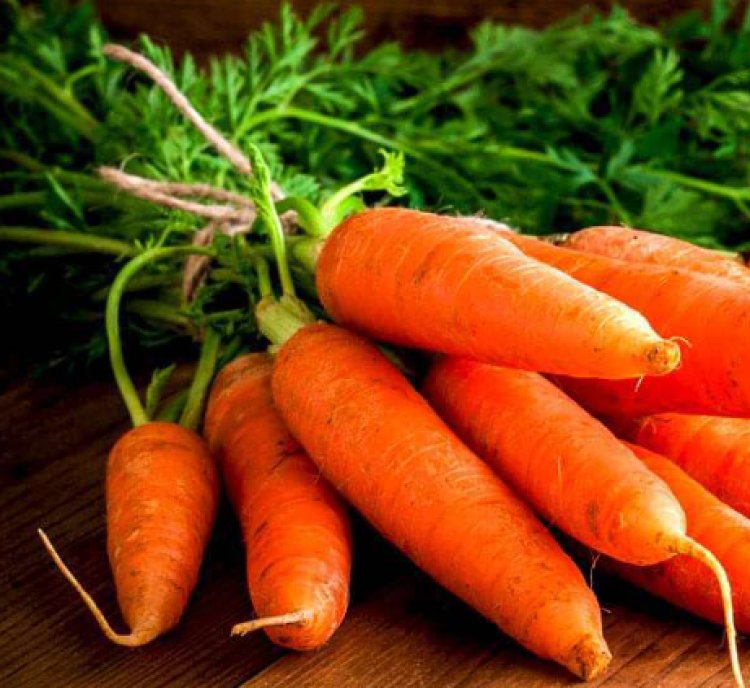How to Grow Carrots at Home
Carrots are simple to grow and have a variety of uses in daily cooking. Growing them in your backyard or home garden gives you limitless access to these delicious and incredibly healthy vegetables and has a wealth of health advantages.

In just a few easy steps, this article shows you how to grow carrots at home;
How to plant carrots
Planting carrots in the ground should be done about 1 cm deep. This guarantees that the plant will begin to germinate in two to three weeks.
To give the plants adequate room to grow, if you are planting the crop in numerous rows, make sure that they are at least 15 cm away from one another.
Once the leaves begin to develop, thin the spacing to 8 cm. You can still pick and eat baby carrots if you do not thin the plants.

Carrots can also be grown indoors in a planter, but make sure they receive their daily requirement of sunlight for at least 3–4 hours.
However, after they are 1-2 weeks old, carrots grown in a pot should be transferred to the garden.
Growth of carrots
At the growing stage, carrots require little maintenance. While growing carrots at home, there are a few things to watch out for. For example, keep the soil's ideal pH level at six and feed your carrot plants some mulch or organic fertilizers like old plant materials. To keep your plants' oxygen levels stable, make sure to routinely water them.
How to grow carrots in containers
A fantastic approach to creating the ideal growth environment for carrots and keeping pests like carrot flies at bay is to grow them in pots. The depth and width of the pores must be at least 10 to 12 inches.
The combination of half soil to half potting mix in the container makes a great low-fertility mixture.
On top of the soil-filled container, scatter seeds extremely thinly before lightly covering them with the mixture. Set in a sunny location, label, and thoroughly water.
Contrary to those in the ground, keep everything moist; these carrots will rely solely on you to set the right environment for them.
Once the seedlings are up, space them a few inches apart. You can harvest the carrots when they are the size of a finger.

Harvesting carrots
The whole growth of a carrot takes two to three months. When the roots' diameter reaches 1.3 cm, it is time to harvest your crop. But if you intend to store them for later, be sure you have a storage strategy.
Dig out the soil near the vegetable's roots, then firmly grasp and pull the carrot out.
Do not remove the carrot while it is still retaining the leaf. If you don't pluck the vegetable along with its leaves, all you'll have left are the leaves.
When all of your crops have been harvested, gather the carrots in a basket or container and give them a good wash before using them or putting them away.
How Should Fresh Carrots Be Stored?

After cleaning off any dirt with cold running water and letting the carrots air dry, remove all but 1/2 inch of the tops by twisting or cutting them off. Refrigerate after sealing in sealed plastic bags. Fresh carrots will get limp after a few hours in the refrigerator.
Mature carrots can be left in the soil for short-term storage, if the ground does not freeze and pests aren't an issue. Additionally, carrots can be kept in cool, dry areas in tubs of wet sand or dry sawdust.
Conclusion
Carrots are nourishing, powerful veggies that boost immunity, cut cholesterol, and even help lower the risk of cancer. They also help with eyesight and immunity. They are one of the most adaptable vegetables and are also a great source of antioxidants, fibre, potassium, vitamin K1, and vitamin A


























